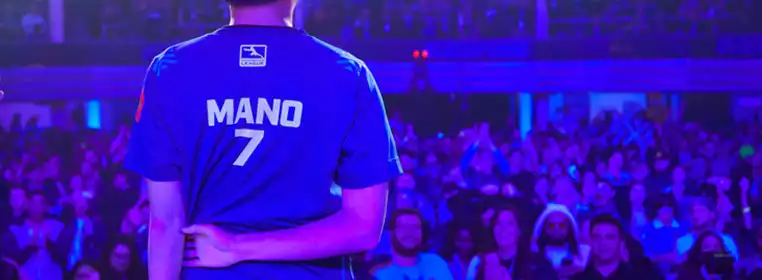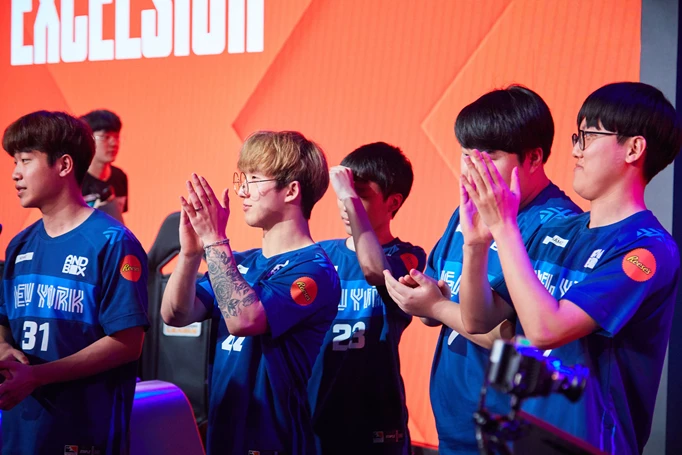Profiling the “New” New York Excelsior

The Tortoise and the Hare taught us that consistency is key and to never rest on your accomplishments. Iteration, in more ways than one, has been the name of the game in Overwatch’s 2020 season and no other team represents that ideal more than the New York Excelsior. With the dust settling around Hero Pools and enough data in the library, it is clear that the New York Excelsior has undergone a very stark transformation from a stubborn defensive juggernaut to a more skirmish focused well-rounded team with an air of creativity. This is the “new” New York Excelsior.
If we reach back into the history books of competitive Overwatch and look at the number of fights a team takes on average we can start to piece together a more objective picture on their style. An aggressive team naturally takes more fights while a more passive and defensive team waits for teams to play into them. That lack of action is going to result in a lower amount of fights taken on the average.
As to keep the number of games equal, let’s review how many team-fights NYXL took on average during the 2018 and 2019 seasons to add some context to the narrative that NYXL was a slower and more methodical team within multiple metagames.
During the New York Excelsior’s dominant 34-6 regular season performance, they took 2,134 team fights. The average number of team fights taken during the regular season was approximately 2,161 team fights. This season included Dive archetypes along with slower, Anti-Dive compositions like Orisa/Roadhog/McCree, and the Mercy metagame.
2019 saw the Excelsior continue to excel with a 22-6 match record placing them within the “Big Three” teams. This included the Vancouver Titans and the San Francisco Shock. Dominant in their own ways during the tank focused GOATS metagame, the New York Excelsior took 1471 team fights during the regular season, the average was 1561 team fights.
Now unfortunately due to the COVID-19 pandemic and Hero Pools, the numbers and data from the 2020 season are both admittedly incomplete and skewed due to teams not playing an equal number of games thus far. However, from the past seasons’ data and through some light analysis we can safely determine that NYXL did indeed play slower and more defensively.

 Click to enlarge
Click to enlargeAfter two seasons of resounding success, the New York Excelsior could have simply just taken their foot off the gas. However, without a proper award in their trophy case, the NYXL not only found a new head coach in Jeong "imt" Yong-Cheol, but they iterated on their incredible experienced and tenured roster. With the departure of Kim "MekO" Tae-hong, New York needed a more proactive presence to help their new system get off the ground, Choi "HOTBA" Hong-Joon was brought on as a catalyst for this more proactive and aggressive style.
In their match against the Guangzhou Charge in Week 14, the Excelsior showcase their new, proactive style while defending Temple of Anubis Point A. While piloting a very short range, double shield composition, the NYXL are looking to brawl in one of the many choke points featured on this half of the map. As the Charge navigates through the first few turns of the map, they cover their entry with an Ice Wall in the face of the NYXL. In seasons past, New York would hold their ground and take that as a victory. Bidding their time, they’d attempt to bait the Charge to match them on their centermost plateau and “catch” their aggression. However, the 2020 NYXL takes fights, rather than reacting to them.
Knowing the Charge now doesn’t have such an important cooldown, the NYXL makes the call to blitz down from the high ground and fight the Charge as they rotate towards the mega health pack. Which, circumstantially makes a lot of sense when you look at their composition of Mei, Torbjorn, Orisa, Sigma, Baptiste, and Lucio. These heroes all excel in close-quarters fights, especially Mei and Torbjorn. With the support of Lucio to quickly speed boost them in and Baptiste to keep them brawling in the choke with his Immortality Field, the NYXL charge (no pun intended) headlong into Guangzhou, catching them off-guard with their aggression. Unfortunately, the NYXL doesn’t come out of the fight with a win, but this is a great example of New York’s evolution from their old style of play.
Another thing often unmentioned is NYXL’s newfound creativity. In the past, they have often been very trendy and don’t tend to reinvent the wheel, rather, they’d take what is pre-established and just work at becoming the best at it. This year, NYXL has leaned on the more creative side of the new Hero Pool system. Even within the same match against Guangzhou, the NYXL showcased a Genji/Doomfist/Wrecking Ball composition on King’s Row Point A. Even going back to Week 3 in their 1-3 loss to the Philadelphia Fusion the NYXL showcased a Dive composition which fought against the grain of slower more immobile Reinhardt, Mei, McCree compositions which dominated the lion’s share of playtime.
After two incredibly successful seasons, we could have easily seen the NYXL kick off their boots and coasted into the third season of the Overwatch League. Instead, they’ve reinvented themselves and iterated on their style. In a poetic way, we are watching the tortoise becoming more like the hare. That’s not to say that the NYXL is becoming lazy, more so that they now understand and are adding more proactivity to their fundamentally sound style of play.
Images via Blizzard Entertainment
